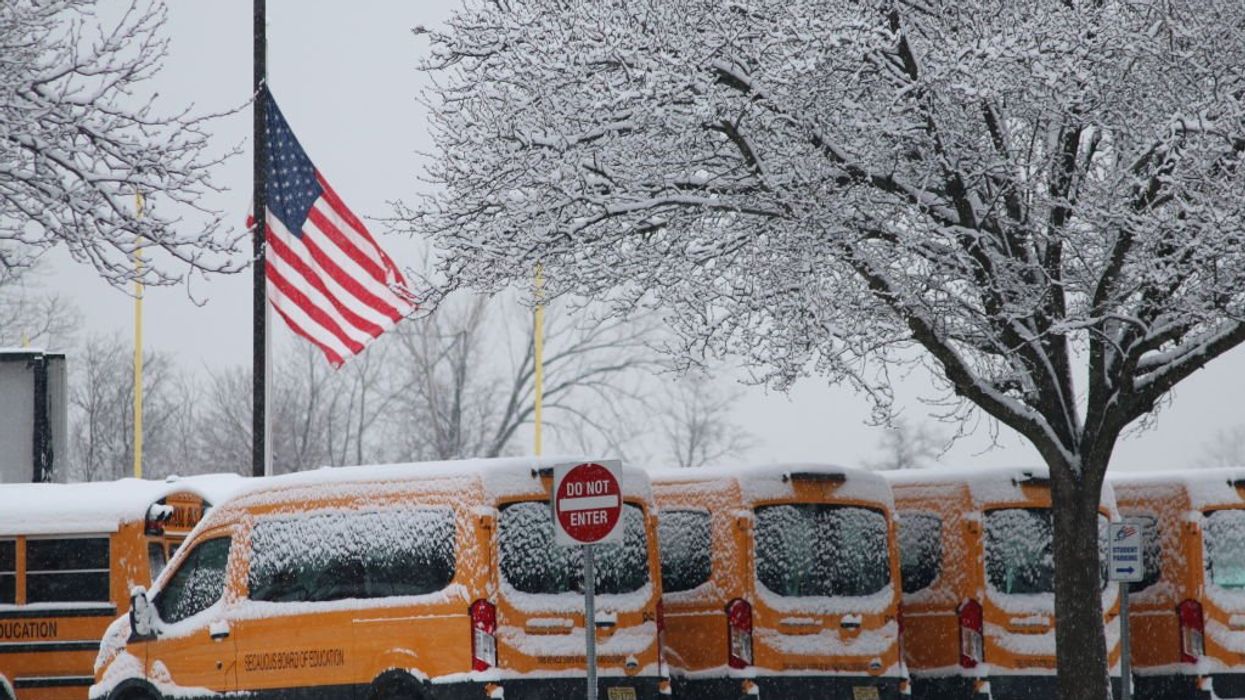
Getty Images/Anadolu

Expect a lot more snow days — and much higher taxes.
The federal government has a mandate that requires new school buses purchased to be “zero emission” by 2027 and all school buses in operation to be electric by 2035. One electric school bus costs more than $400,000, and up to $30,000 more per bus for the needed infrastructure — not to mention whether our electric grid has the necessary capacity. This mandate is a steep climb, and it’s going to push our school districts and property taxpayers right off the cliff.
According to a survey published by Consumer Reports late last year, electric vehicles are nearly 80% less reliable than conventional vehicles.
California is pushing schools to get rid of their diesel buses and swap them for battery-powered ones. But in the state's vast northern rural school districts, with their mountain passes and long, snowy winters, the range of the typical electric bus is not nearly enough.
Look at what happened In Canada, where the city of Edmonton purchased 60 battery-powered buses from California-based manufacturer Proterra. After encountering mechanical problems and shorter-than-promised operating ranges, the city sued Proterra for $82 million in damages. The Canadians might have been clued in by Philadelphia's experience. The City of Brotherly Love purchased a fleet of Proterra buses in 2019 that had to be taken out of service in February of the following year due to defects, the local National Public Radio affiliate reported.
Shocking Reality of Electric Bus Mandate and the Global Pushbackwww.youtube.com
Proterra last year filed for Chapter 11 bankruptcy protection, which allows the business to continue operating while it works with its creditors.
This is the same bus company that Joe Biden virtually toured a few years back.
Bus electrification ambitions present myriad complexities. Including inadequate energy infrastructure, capital funding, electric bus manufacturing challenges, high costs, limited range, public resistance, and an unrealistic 2027 deadline for zero emissions, bus purchases pose significant obstacles.
The bus electrification goals are blind to the significant investment of taxpayer dollars and progress made by school districts that have switched to low-emission propane bus fleets.
California is pushing schools to get rid of their diesel buses and swap them for battery-powered ones. But in the state's vast northern rural school districts, with their mountain passes and long, snowy winters, the range of the typical electric bus is not nearly enough.
Global e-bus sales increased by 32% last year, according to a report from Bloomberg New Energy Finance. Today, about 17% of the world’s buses are electric — 425,000 in total. But 99% of them are in China, where a national mandate promotes all sorts of electric vehicles. In the United States, a few cities have bought a few electric buses, or at least run limited pilots, to test the concept out. California has even mandated that by 2029 all buses purchased by its mass transit agencies be zero-emission.
During early tests in places like Belo Horizonte, Brazil, e-buses had trouble getting over steep hills with full passenger loads. Albuquerque, New Mexico, canceled a 15-bus deal with the Chinese manufacturer BYD after finding equipment problems during testing. The city also sued. Today’s buses get around 225 miles per charge, depending on topography and weather conditions, which means they have to re-up about once a day on a shorter route in a dense city. That’s a problem in many of places. This doesn’t work for many school districts or cities.
In colder climates globally, England has had major difficulties with keeping buses warm and preventing condensation from building up on the windows. The winter months highlight the shortcomings of electric transportation. Heating, lighting, and weather-related traffic congestion drain the batteries more quickly than in temperate months.
In Iowa City, electric buses struggle with winter weather, too. At any temperature below 20 degrees Fahrenheit, the buses lose between 39% and 45% of their energy capacity.
How is all this being funded? Your tax dollars, of course. In 2021, Joe Biden pledged more than $10 billion from his $1.9 trillion bipartisan infrastructure plan toward zero-emission transit and school bus programs. Unfortunately, a lot of these bad decisions are being made with other people's money — taxpayers' money. Your money!
Lauren Fix